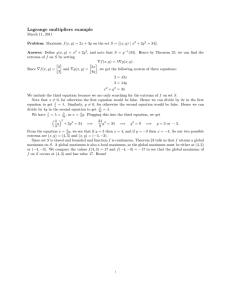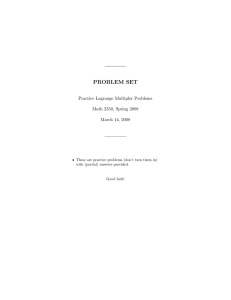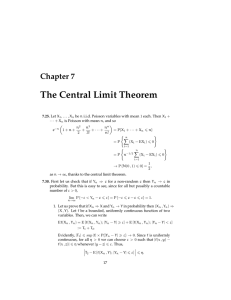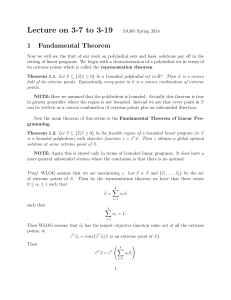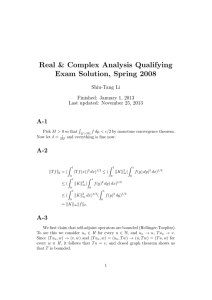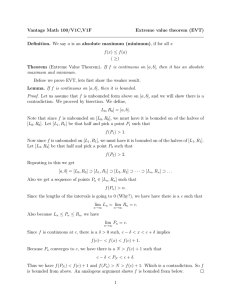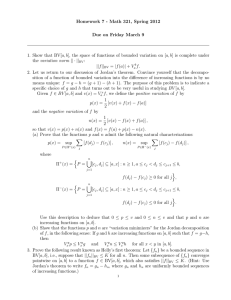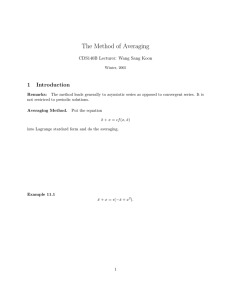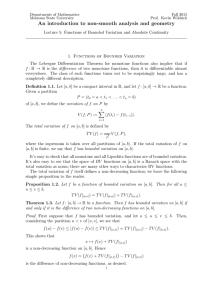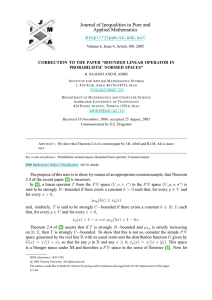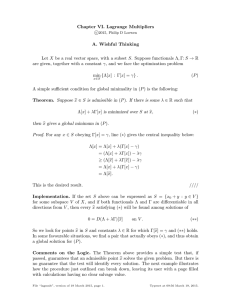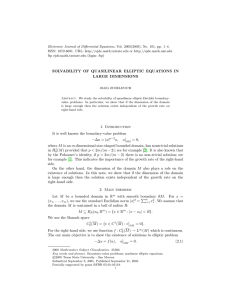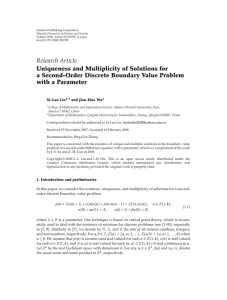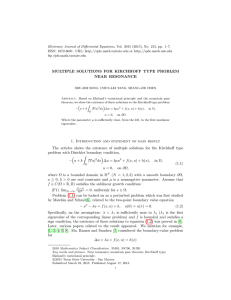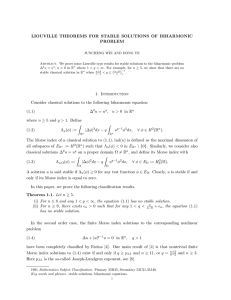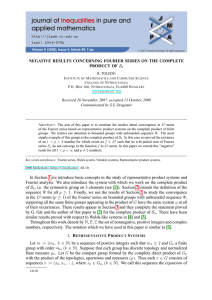18.022 Recitation Quiz (with solutions) 27 October 2014 f
advertisement
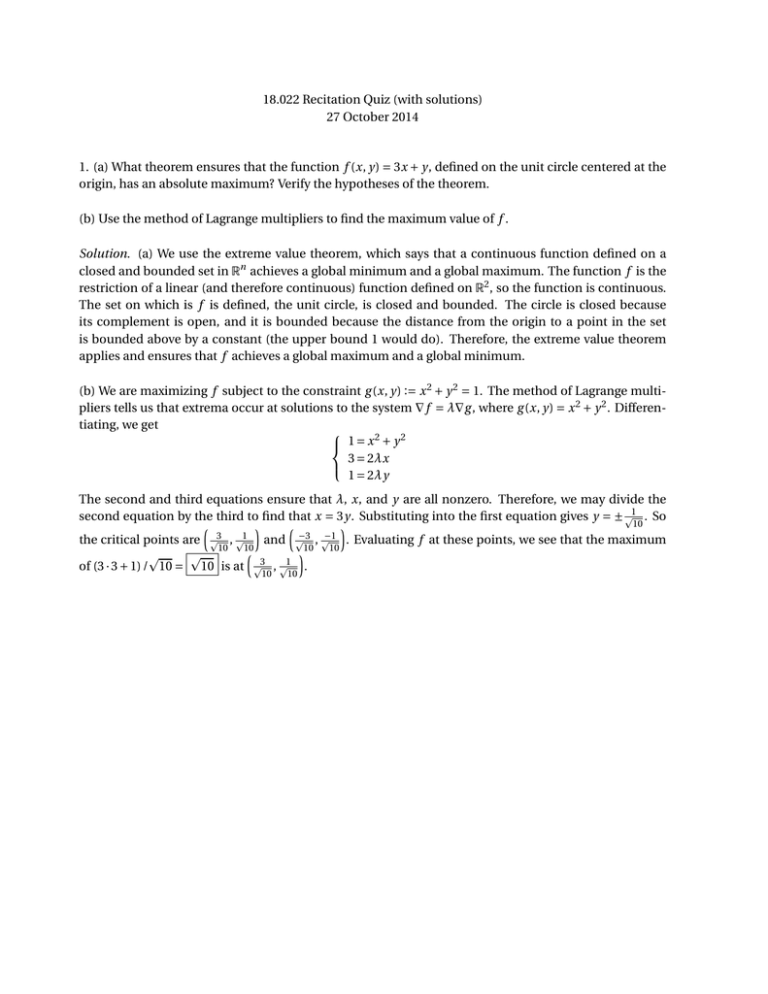
18.022 Recitation Quiz (with solutions) 27 October 2014 1. (a) What theorem ensures that the function f (x, y) = 3x + y, defined on the unit circle centered at the origin, has an absolute maximum? Verify the hypotheses of the theorem. (b) Use the method of Lagrange multipliers to find the maximum value of f . Solution. (a) We use the extreme value theorem, which says that a continuous function defined on a closed and bounded set in Rn achieves a global minimum and a global maximum. The function f is the restriction of a linear (and therefore continuous) function defined on R2 , so the function is continuous. The set on which is f is defined, the unit circle, is closed and bounded. The circle is closed because its complement is open, and it is bounded because the distance from the origin to a point in the set is bounded above by a constant (the upper bound 1 would do). Therefore, the extreme value theorem applies and ensures that f achieves a global maximum and a global minimum. (b) We are maximizing f subject to the constraint g (x, y) := x 2 + y 2 = 1. The method of Lagrange multipliers tells us that extrema occur at solutions to the system ∇ f = λ∇g , where g (x, y) = x 2 + y 2 . Differentiating, we get 2 2 1=x + y 3 = 2λx 1 = 2λy The second and third equations ensure that λ, x, and y are all nonzero. Therefore, we may divide the second equation by the third to find that x = 3y. Substituting into the first equation gives y = ± p1 . So 10 ³ ´ ³ ´ the critical points are p3 , p1 and p−3 , p−1 . Evaluating f at these points, we see that the maximum 10 10 ´10 10 ³ p p 1 3 of (3 · 3 + 1) / 10 = 10 is at p , p . 10 10
